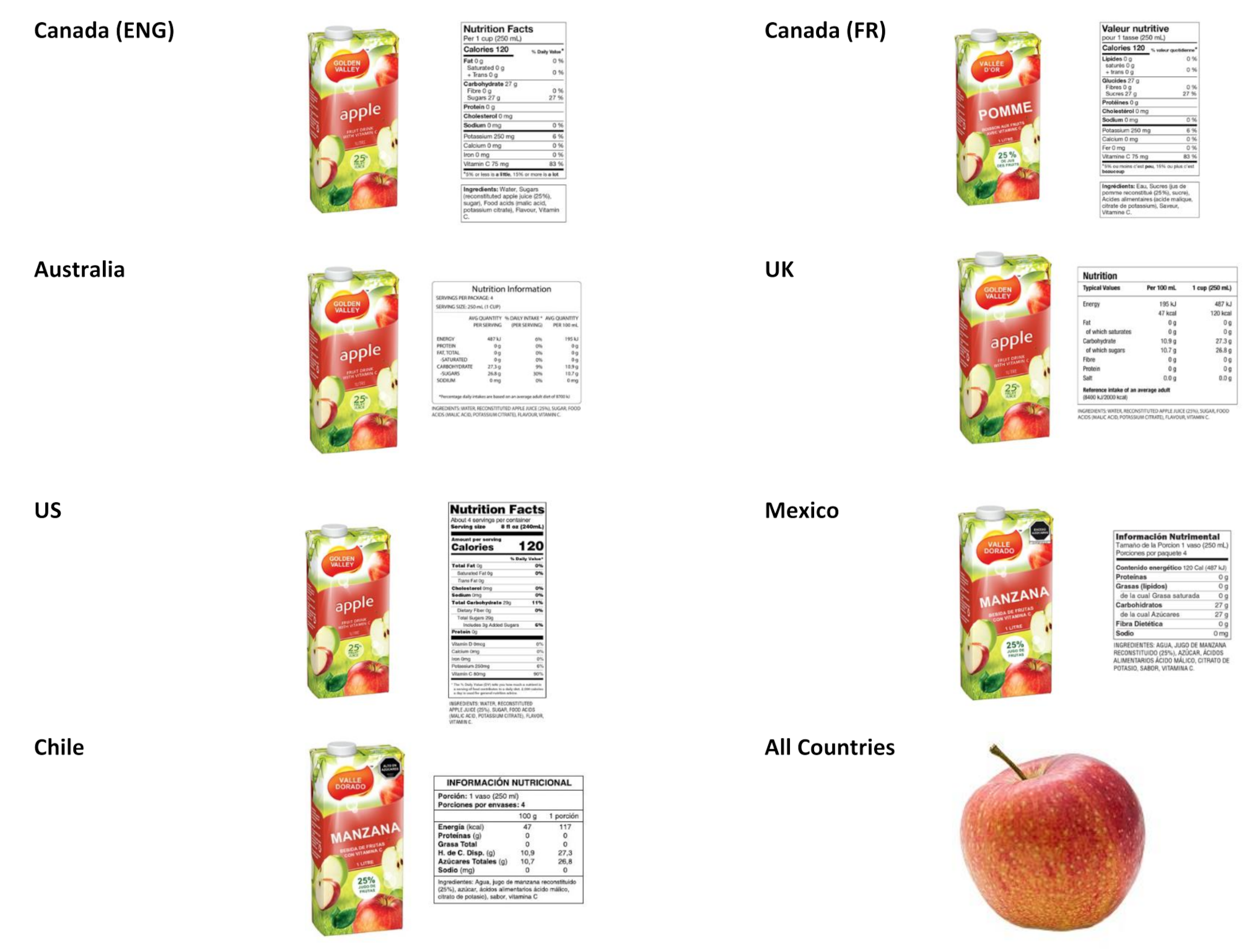Grosso G, Mistretta A, Turconi G, Cena H, Roggi C, Galvano F. Nutrition knowledge and other determinants of food intake and lifestyle habits in children and young adolescents living in a rural area of sicily, South Italy. Public Health Nutr. 2013;16(10):1827–36.
Article
PubMed
Google Scholar
Scaglioni S, De Cosmi V, Ciappolino V, Parazzini F, Brambilla P, Agostoni C. Factors influencing children’s eating behaviours. Nutrients. 2018;10(6):706.
Article
PubMed
PubMed Central
Google Scholar
Kowalkowska J, Wadolowska L, Hamulka J, Wojtas N, Czlapka-Matyasik M, Kozirok W, et al. Reproducibility of a short-form, multicomponent dietary questionnaire to assess food frequency consumption, nutrition knowledge, and lifestyle (SF-FFQ4PolishChildren) in Polish children and adolescents. Nutrients. 2019;11(12):2929.
Article
PubMed
PubMed Central
Google Scholar
Movassagh E, Baxter-Jones A, Kontulainen S, Whiting S, Vatanparast H. Tracking dietary patterns over 20 years from childhood through adolescence into young adulthood: the Saskatchewan pediatric bone mineral accrual study. Nutrients. 2017;9(9):990.
Article
PubMed
PubMed Central
Google Scholar
Lin W, Yang HC, Hang CM, Pan WH. Nutrition knowledge, attitude, and behavior of Taiwanese elementary school children. Asia Pac J Clin Nutr. 2007;16(Suppl2):534–46.
PubMed
Google Scholar
Akseer N, Mehta S, Wigle J, Chera R, Brickman ZJ, Al-Gashm S, et al. Non-communicable diseases among adolescents: current status, determinants, interventions and policies. BMC Public Health. 2020;20(1):1908.
Article
CAS
PubMed
PubMed Central
Google Scholar
Pulgaron ER, Delamater AM. Obesity and type 2 diabetes in children: epidemiology and treatment. Curr Diab Rep. 2014;14(8):508.
Article
PubMed
PubMed Central
Google Scholar
Wardle J, Parmenter K, Waller J. Nutrition knowledge and food intake. Appetite. 2000;34(3):269–75.
Article
CAS
PubMed
Google Scholar
Thomas H, Azevedo Perry E, Slack J, Samra HR, Manowiec E, Petermann L, et al. Complexities in conceptualizing and measuring food literacy. J Acad Nutr Diet. 2019;119(4):563–73.
Article
PubMed
Google Scholar
Zheng Y, Mancino J, Burke LE, Glanz K. Current theoretical bases for nutrition intervention and their uses. In: Nutrition in the prevention and treatment of disease [Internet]. Elsevier; 2017 [cited 2022 Feb 3]. pp. 185–201. Available from: https://linkinghub.elsevier.com/retrieve/pii/B9780128029282000096
Spronk I, Kullen C, Burdon C, O’Connor H. Relationship between nutrition knowledge and dietary intake. Br J Nutr. 2014;111(10):1713–26.
Article
CAS
PubMed
Google Scholar
Franco-Arellano B, Brown JM, Froome HM, LeSage A, Arcand J. Development and pilot testing of the nutrition attitudes and knowledge questionnaire to measure changes of child nutrition knowledge related to the canada’s food guide. Appl Physiol Nutr Metab. 2021;46(12):1495–501.
Article
PubMed
Google Scholar
Thakur S, Mathur P. Nutrition knowledge and its relation with dietary behaviour in children and adolescents: a systematic review. Int J Adolesc Med Health. 2022;34(6):381–92.
Article
PubMed
Google Scholar
Asakura K, Todoriki H, Sasaki S. Relationship between nutrition knowledge and dietary intake among primary school children in japan: combined effect of children’s and their guardians’ knowledge. J Epidemiol. 2017;27(10):483–91.
Article
PubMed
PubMed Central
Google Scholar
Chaudhary A, Sudzina F, Mikkelsen BE. Promoting healthy eating among young people—a review of the evidence of the impact of school-based interventions. Nutrients. 2020;12(9):2894.
Article
PubMed
PubMed Central
Google Scholar
Azevedo Perry E, Thomas H, Samra HR, Edmonstone S, Davidson L, Faulkner A, et al. Identifying attributes of food literacy: a scoping review. Public Health Nutr. 2017;20(13):2406–15.
Article
PubMed
PubMed Central
Google Scholar
Krause C, Sommerhalder K, Beer-Borst S, Abel T. Just a subtle difference? Findings from a systematic review on definitions of nutrition literacy and food literacy. Health Promot Int. 2016;33(3).
Parmenter K, Wardle J. Development of a general nutrition knowledge questionnaire for adults. Eur J Clin Nutr. 1999;53(4):298–308.
Article
CAS
PubMed
Google Scholar
Monteiro CA, Cannon G, Levy RB, Moubarac JC, Louzada ML, Rauber F, et al. Ultra-processed foods: what they are and how to identify them. Public Health Nutr. 2019;22(5):936–41.
Article
PubMed
PubMed Central
Google Scholar
Bhawra J, Kirkpatrick SI, Hall MG, Vanderlee L, Hammond D. Initial development and evaluation of the food processing knowledge (FoodProK) score: a functional test of nutrition knowledge based on level of processing. J Acad Nutr Diet. 2021;121(8):1542–50.
Article
PubMed
Google Scholar
Fiolet T, Srour B, Sellem L, Kesse-Guyot E, Allès B, Méjean C et al. Consumption of ultra-processed foods and cancer risk: results from NutriNet-Santé prospective cohort. BMJ. 2018;360:k322.
Dehghan M, Mente A, Rangarajan S, Mohan V, Swaminathan S, Avezum A, et al. Ultra-processed foods and mortality: analysis from the prospective urban and rural epidemiology study. Am J Clin Nutr. 2023;117(1):55–63.
Article
PubMed
Google Scholar
Liang S, Zhou Y, Zhang Q, Yu S, Wu S. Ultra-processed foods and risk of all-cause mortality: an updated systematic review and dose-response meta-analysis of prospective cohort studies. Syst Rev. 2025;14(1):53.
Article
PubMed
PubMed Central
Google Scholar
Souza M, Moura FS, Lima LCV, Amaral MJM. Association between higher consumption of ultra-processed foods and risk of diabetes and its complications: A systematic review & updated meta-analysis. Metabolism. 2025;165:156134.
Article
CAS
PubMed
Google Scholar
Hall KD, Ayuketah A, Brychta R, Cai H, Cassimatis T, Chen KY, et al. Ultra-processed diets cause excess calorie intake and weight gain: an inpatient randomized controlled trial of ad libitum food intake. Cell Metab. 2019;30(1):67–e773.
Article
CAS
PubMed
PubMed Central
Google Scholar
Neri D, Martinez-Steele E, Monteiro CA, Levy RB. Consumption of ultra‐processed foods and its association with added sugar content in the diets of US children, NHANES 2009‐2014. Pediatr Obes. 2019;14(12):1–11.
Article
Google Scholar
Vandevijvere S, De Ridder K, Fiolet T, Bel S, Tafforeau J. Consumption of ultra-processed food products and diet quality among children, adolescents and adults in Belgium. Eur J Nutr. 2019;58(8):3267–78.
Article
PubMed
Google Scholar
Fangupo LJ, Haszard JJ, Leong C, Heath ALM, Fleming EA, Taylor RW. Relative validity and reproducibility of a food frequency questionnaire to assess energy intake from minimally processed and ultra-processed foods in young children. Nutrients. 2019;11(6):1290.
Article
CAS
PubMed
PubMed Central
Google Scholar
Neri D, Steele EM, Khandpur N, Cediel G, Zapata ME, Rauber F, et al. Ultraprocessed food consumption and dietary nutrient profiles associated with obesity: A multicountry study of children and adolescents. Obes Rev. 2022;23(S1):e13387.
Article
PubMed
Google Scholar
Robles B, Mota-Bertran A, Saez M, Solans M. Association between ultraprocessed food consumption and excess adiposity in children and adolescents: A systematic review. Obes Rev. 2024;25(10):e13796.
Article
CAS
PubMed
Google Scholar
Khoury N, Martínez MÁ, Garcidueñas-Fimbres TE, Pastor-Villaescusa B, Leis R, De Heras-Delgado L. Ultraprocessed food consumption and cardiometabolic risk factors in children. JAMA Netw Open. 2024;7(5):e2411852.
Article
PubMed
PubMed Central
Google Scholar
Chen ZH, Mousavi S, Mandhane PJ, Simons E, Turvey SE, Moraes TJ, et al. Ultraprocessed food consumption and obesity development in Canadian children. JAMA Netw Open. 2025;8(1):e2457341.
Article
PubMed
PubMed Central
Google Scholar
Marconi S, Covolo L, Marullo M, Zanini B, Viola GCV, Gelatti U, et al. Cooking skills, eating habits and nutrition knowledge among Italian adolescents during Covid-19 pandemic: sub-analysis from the online survey COALESCENT (Change among ItAlian adoLESCENTs). Nutrients. 2023;15(19):4143.
Article
PubMed
PubMed Central
Google Scholar
Petridi E, Karatzi K, Magriplis E, Charidemou E, Philippou E, Zampelas A. The impact of ultra-processed foods on obesity and cardiometabolic comorbidities in children and adolescents: a systematic review. Nutr Rev. 2024;82(7):913–28.
Article
PubMed
Google Scholar
García-Blanco L, De La OV, Santiago S, Pouso A, Martínez-González MÁ, Martín-Calvo N. High consumption of ultra-processed foods is associated with increased risk of micronutrient inadequacy in children: the SENDO project. Eur J Pediatr. 2023;182(8):3537–47.
Article
PubMed
PubMed Central
Google Scholar
Liu J, Steele EM, Li Y, Karageorgou D, Micha R, Monteiro CA, et al. Consumption of ultra-processed foods and diet quality among U.S. Children and adults. Am J Prev Med. 2022;62(2):252–64.
Article
PubMed
Google Scholar
Koios D, Machado P, Lacy-Nichols J. Representations of ultra-processed foods: a global analysis of how dietary guidelines refer to levels of food processing. Int J Health Policy Manag. 2022;11(11):2588–99.
PubMed
PubMed Central
Google Scholar
de Salud M, Gobierno de Chile. Guías alimentarias para Chile [Internet]. Chile; 2024 [cited 2025 Mar 27]. Available from: https://dcslosangeles.cl/wp-content/uploads/2024/08/Guias-alimentarias-version-corregida-MINSAL.pdf
SSA, INSP, UNICEF. Guías alimentarias saludables y sostenibles para la población Mexicana [Internet]. Mexico; 2023 [cited 2025 Mar 27]. Available from: https://educacionbasica.sep.gob.mx/wp-content/uploads/2023/09/GUIAS-ALIMENTARIAS-SALUDABLES-Y-SOSTENIBLES.pdf
Hässig A, Hartmann C, Sanchez-Siles L, Siegrist M. Perceived degree of food processing as a cue for perceived healthiness: the NOVA system mirrors consumers’ perceptions. Food Qual Prefer. 2023;110:104944.
Article
Google Scholar
Kersting M, Sichert-Hellert W, Vereecken CA, Diehl J, Béghin L, De Henauw S, et al. Food and nutrient intake, nutritional knowledge and diet-related attitudes in European adolescents. Int J Obes. 2008;32(S5):S35–41.
Article
Google Scholar
Moreno LA, Gottrand F, Huybrechts I, Ruiz JR, González-Gross M, DeHenauw S, et al. Nutrition and lifestyle in European adolescents: the HELENA (Healthy lifestyle in Europe by nutrition in Adolescence) study. Adv Nutr. 2014;5(5):S615–23.
Article
Google Scholar
American Association for Public Opinion Research. Standard definitions: final dispositions of case codes and outcome rates for surveys [Internet]. AAPOR. 2016. (9th edition). Available from: https://aapor.org/wp-content/uploads/2022/11/Standard-Definitions20169theditionfinal.pdf
Hammond D, White CM, Rynard VL, Vanderlee L. International Food Policy Study: technical report– 2020 youth survey [Internet]. University of Waterloo; 2021 p. 18. Available from: www.foodpolicystudy.com/methods
Hammond D, Vanderlee L, White CM, Acton RB, White M, Roberto CA, et al. The conceptual framework for the international food policy study: evaluating the population-level impact of food policy. J Nutr. 2022;152(Suppl 1):S1–12.
Article
Google Scholar
Moubarac JC, Parra DC, Cannon G, Monteiro CA. Food classification systems based on food processing: significance and implications for policies and actions: a systematic literature review and assessment. Curr Obes Rep. 2014;3(2):256–72.
Article
PubMed
Google Scholar
Greenwood JLJ, Lin J, Arguello D, Ball T, Shaw JM. Healthy eating vital sign: A new assessment tool for eating behaviors. ISRN Obes. 2012;2012:734682.
PubMed
PubMed Central
Google Scholar
Litwin H, Sapir EV. Perceived income adequacy among older adults in 12 countries: findings from the survey of health, ageing, and retirement in Europe. Gerontologist. 2009;49(3):397–406.
Article
PubMed
PubMed Central
Google Scholar
World Health Organization. Growth reference 5–19 years: BMI-for-age [Internet]. n.d. [cited 2025 Mar 25]. Available from: https://www.who.int/tools/growth-reference-data-for-5to19-years/indicators/bmi-for-age
de Onis M, Onyango AW, Borghi E, Siyam A, Nishida C, Siekmann J. Development of a WHO growth reference for school-aged children and adolescents. Bull World Health Organ. 2007;85(9):660–7.
Article
PubMed
PubMed Central
Google Scholar
Bowring AL, Peeters A, Freak-Poli R, Lim M, Gouillou M, Hellard M. Measuring the accuracy of self-reported height and weight in a community-based sample of young people. 2012;8.
Parkinson S, Nutrition (GAIN). Front-of-pack labelling and visual cues as tools to influence consumer food choices in low- and middle-income countries [Internet]. Geneva, Switzerland: Global Alliance for Improved; 2020 Mar [cited 2022 May 2]. Report No.: 6. Available from: https://www.gainhealth.org/sites/default/files/publications/documents/gain-convening-paper-series-6-front-of-pack-labelling-and-visual-cues-as-tools-to-influence-consumer-food-choices-in-low-and-middle-income-countries.pdf
Hock K, Acton RB, Jáuregui A, Vanderlee L, White CM, Hammond D. Experimental study of front-of-package nutrition labels’ efficacy on perceived healthfulness of sugar-sweetened beverages among youth in six countries. Prev Med Rep. 2021;24:101577.
Article
PubMed
PubMed Central
Google Scholar
Hammond D, Acton RB, Rynard VL, White CM, Vanderlee L, Bhawra J, et al. Awareness, use and Understanding of nutrition labels among children and youth from six countries: findings from the 2019–2020 international food policy study. Int J Behav Nutr Phys Act. 2023;20(1):55.
Article
PubMed
PubMed Central
Google Scholar
Taillie LS, Busey E, Stoltze FM, Dillman Carpentier FR. Governmental policies to reduce unhealthy food marketing to children. Nutr Rev. 2019;77(11):787–816.
Article
PubMed
PubMed Central
Google Scholar
Capacci S, Mazzocchi M, Shankar B, Brambila Macias J, Verbeke W, Pérez-Cueto FJ, et al. Policies to promote healthy eating in europe: a structured review of policies and their effectiveness. Nutr Rev. 2012;70(3):188–200.
Article
PubMed
Google Scholar
Cooke LJ, Wardle J. Age and gender differences in children’s food preferences. Br J Nutr. 2005;93(5):741–6.
Article
CAS
PubMed
Google Scholar
Bärebring L, Palmqvist M, Winkvist A, Augustin H. Gender differences in perceived food healthiness and food avoidance in a Swedish population-based survey: a cross sectional study. Nutr J. 2020;19(1):140.
Article
PubMed
PubMed Central
Google Scholar
Song S, Ishdorj A, Dave JM. Gender differences in nutritional quality and consumption of lunches brought from home to school. Int J Environ Res Public Health. 2021;18(24):13168.
Article
CAS
PubMed
PubMed Central
Google Scholar
Beech BM, Rice R, Myers L, Johnson C, Nicklas TA. Knowledge, attitudes, and practices related to fruit and vegetable consumption of high school students. J Adolesc Health. 1999;24(4):244–50.
Article
CAS
PubMed
Google Scholar
Spencer RA, Rehman L, Kirk SF. Understanding gender norms, nutrition, and physical activity in adolescent girls: a scoping review. Int J Behav Nutr Phys Act. 2015;12:6.
Article
PubMed
PubMed Central
Google Scholar
Damiano SR, Paxton SJ, Wertheim EH, McLean SA, Gregg KJ. Dietary restraint of 5-year-old girls: associations with internalization of the thin ideal and maternal, media, and peer influences. Int J Eat Disord. 2015;48(8):1166–9.
Article
PubMed
Google Scholar
O’Dea JA, Wilson R. Socio-cognitive and nutritional factors associated with body mass index in children and adolescents: possibilities for childhood obesity prevention. Health Educ Res. 2006;21(6):796–805.
Article
PubMed
Google Scholar
Chang KJ, Cho HY. Weight control attitude and nutrition knowledge of Korean high school students by BMI. FASEB J. 2013;27(S1):10623–10623.
Google Scholar
Cai Z, Jiang K, Wang T, Li S, Xian J, Zhao Y, et al. Influence of adolescents’ and parental dietary knowledge on adolescents’ body mass index (BMI), overweight/obesity in 2004–2015: a longitudinal study. Arch Public Health. 2023;81:188.
Article
PubMed
PubMed Central
Google Scholar
Carbonneau E, Lamarche B, Provencher V, Desroches S, Robitaille J, Vohl MC, et al. Associations between nutrition knowledge and overall diet quality: the moderating role of sociodemographic characteristics—results from the PREDISE study. Am J Health Promot. 2021;35(1):38–47.
Article
PubMed
Google Scholar
Giménez-Legarre N, Santaliestra-Pasías AM, Beghin L, Dallongeville J, de la Gilbert OA. Dietary patterns and their relationship with the perceptions of healthy eating in European adolescents: the HELENA study. J Am Coll Nutr. 2019;38(8):703–13.
Article
PubMed
Google Scholar
Brown R, Seabrook JA, Stranges S, Clark AF, Haines J, O’Connor C, et al. Examining the correlates of adolescent food and nutrition knowledge. Nutrients. 2021;13(6):2044.
Article
PubMed
PubMed Central
Google Scholar
Koch F, Hoffmann I, Claupein E. Types of nutrition knowledge, their socio-demographic determinants and their association with food consumption: results of the NEMONIT study. Front Nutr. 2021;8:630014.
Article
PubMed
PubMed Central
Google Scholar
Vázquez-Espino K, Rodas-Font G, Farran-Codina A. Sport nutrition knowledge, attitudes, sources of information, and dietary habits of sport-team athletes. Nutrients. 2022;14(7):1345.
Article
PubMed
PubMed Central
Google Scholar
Scalvedi ML, Gennaro L, Saba A, Rossi L. Relationship between nutrition knowledge and dietary intake: an assessment among a sample of Italian adults. Front Nutr. 2021;8:714493.
Article
PubMed
PubMed Central
Google Scholar
Bhawra J, Kirkpatrick SI, Hall MG, Vanderlee L, White CM, Hammond D. Patterns and correlates of nutrition knowledge across five countries in the 2018 international food policy study. Nutr J. 2023;22(1):19.
Article
CAS
PubMed
PubMed Central
Google Scholar
Radecki CM, Jaccard J. Perceptions of knowledge, actual knowledge, and information search behavior. J Exp Soc Psychol. 1995;31:107–38.
Article
Google Scholar
Crosby RA, Yarber WL. Perceived versus actual knowledge about correct condom use among U.S. Adolescents: results from a National study. J Adolesc Health. 2001;28(5):415–20.
Article
CAS
PubMed
Google Scholar
Kruger J, Dunning D. Unskilled and unaware of it: how difficulties in recognizing one’s own incompetence lead to inflated self-assessments. J Personal Soc Psychol. 1999;77(6):1121–34.
Article
CAS
Google Scholar
Scheiber R, Karmasin M, Diehl S. Exploring the Dunning-Kruger effect in health communication: how perceived food and media literacy and actual knowledge drift apart when evaluating misleading food advertising. J Health Commun. 2023;28(11):707–27.
Article
PubMed
Google Scholar
Cai H, Brown JD, Deng C, Oakes MA. Self-esteem and culture: differences in cognitive self‐evaluations or affective self‐regard? Asian J Soc Psychol. 2007;10(3):162–70.
Article
Google Scholar
Hampton RS, Varnum MEW. Do cultures vary in self-enhancement? ERP, behavioral, and self-report evidence. Soc Neurosci. 2018;13(5):566–78.
Article
PubMed
Google Scholar
Kanwar R, Grund L, Olson JC. When do the measures of knowledge measure what we think they are measuring? J Adv Consum Res. 1990;17:603–8.
Hutchinson J, Tarasuk V. The relationship between diet quality and the severity of household food insecurity in Canada. Public Health Nutr. 2022;25(4):1013–26.
Article
PubMed
Google Scholar
















